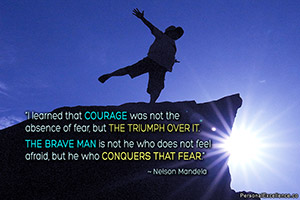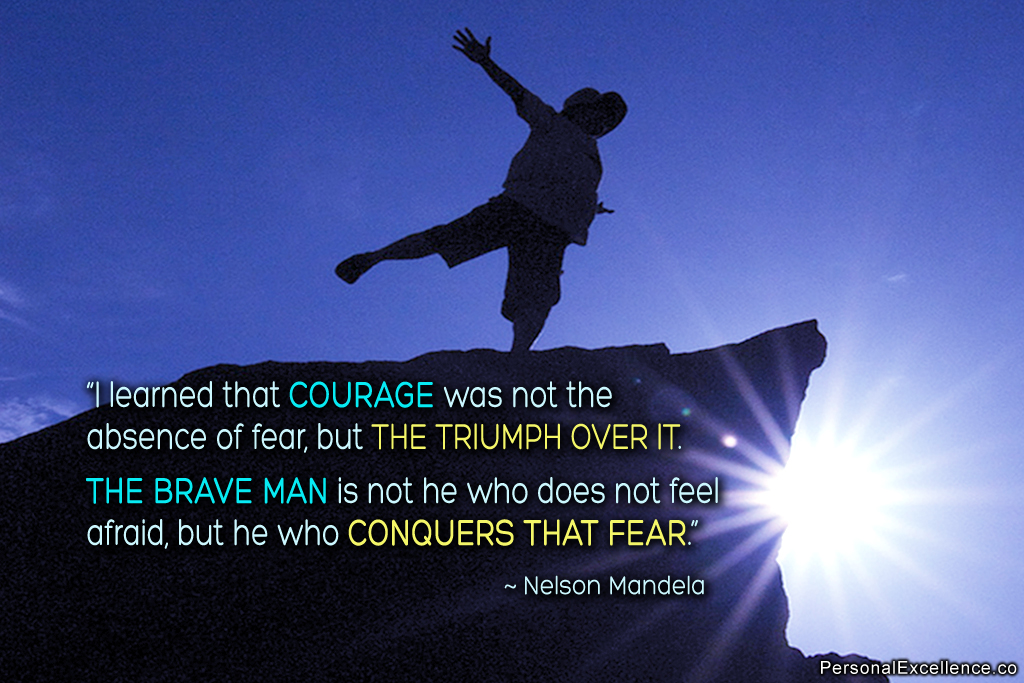This is Tip #4 of the Million Dollar Tip Series. If you have financial goals in life, you’ll find this series a perfect resource to achieve them.

If you want to earn an average income, simply delivering value, leveraging on your skills and helping some people address their needs will let you to live quite sufficiently from month to month. However, these won’t help your earnings breakthrough to the next level.
On the other hand, if you want to earn a lot of money, you need to break out of your framework and scale up everything you’re doing. This means reaching a hundred times, a thousand times, or even ten thousand times more people than you’re serving at the moment. The more people you reach out to, the more value you’re adding to the universe, the higher the returns of your business.
Below are 6 tips to scale up your business:
1. Instead of 1-1, think one-to-many
Most service businesses operate 1-1 with customers. 1-1 means you set aside time exclusively for each client.
For example, web design — where you work on customized website designs for each client. Such materials are usually produced exclusively for a client and can’t be used anywhere else. Video production, where you create customized video projects for each client. Wedding photography, where every client has his/her own consultation, set-up, photo shoot, prints, etc. Other examples include life coaching, consulting, gym training, beauticians, masseuse, hair stylists, counseling, etc. In each case, the service/work produced is catered to one client and cannot be replicated for another client.
1-1 work doesn’t scale well at all because your time is frozen every time you take on a client engagement. Even if you work around the clock and process each engagement as quickly as you can, there’s a cap to the number of clients you can take on every day/week. Not only that, your output is customized for that client only and can’t be used for another client. This sets a ceiling to how much you can accomplish with your business. By virtue of running a 1-1 oriented business, you have already boxed yourself with how much you can earn.
That’s the case for my 1-1 coaching sessions. Even if I am to work myself to death and pack all my days with 1-1 sessions, I can only reach so many people at the end of the day. The reality is that I just have 24 hours a day, 7 days a week.
That’s why I don’t just do 1-1 coaching — I use it in combination with other mediums which let me reach out to many people at one go. For example, speaking. When I’m training in a workshop, I address a group of people at one go, as opposed to 1-1 coaching, which is just 1 person. The benefit of speeches is that it’s scalable — there can be 5, 10, 50, or even 100 more people in the audience, and it wouldn’t affect the learning experience for other participants. Everyone gets to hear the same speech, view the same slides, and review the same material handouts. Usually I speak to an audience of 40-60 participants. The largest crowd I’ve spoken to-date is 1,000 people — needless to say, that had a high value output.
Another one-to-many medium I use and love is blogging. The reason why blogging is great is because it’s highly effective — it allows me to reach a large number of people instantaneously. Each article I write is read by ten thousands of readers, and will continue to be read by new readers who discover Personal Excellence in months and years to come. Time-wise, it takes the same amount of hours for me to write a blog post, whether it’s read by 1 person or 100,000 people. Once it’s written, the work is complete.
Not only that, the blog is a timeless medium. As opposed to a workshop where participants have to be present to benefit from the session, with blog articles, the reader can read at any time he/she wants, and the articles will be there for his/her perusal. Many of the new readers today make it a point to visit the reader favorites and read articles I’ve written from back in 2008. There’s no expiry date to the content. As long as I keep paying the hosting fees, readers can continue to read the articles on the blog.
Yet another one-to-many medium I use is online group coaching. Examples would be Live a Better Life in 30 Days and Blogging Intensive Bootcamp, where I coach a group of participants via an online forum platform. In each case, I’m able to work with as many as 50-100 participants, without affecting the quality of the experience for other members. Depending on the course design, it’s even possible to create a meaningful course experience with over 500 participants, as was the case for Live a Healthier Life in 21 Days Challenge in Jan 2011. In fact, the first run of Live a Better Life in 30 Days that was open to the public had over 1,200 participants!
These one-to-many channels help me to significantly increase my value delivery to the world, which is why I spend more time on those channels than on 1-1 coaching.
The reason why I continue to provide 1-1 coaching is because it serves a unique role in the business. Firstly, it provides me with added insights on what people are experiencing, which is invaluable for me in my work. Secondly, I recognize some clients have specific issues/questions which require targeted attention. For such clients, 1-1 coaching will be necessary. So in a way, the 1-1 coaching option exists as a value-added option for readers who may need it one day. Thirdly, I do enjoy working with clients on 1-1 basis — from getting to know them, to becoming partners in growth, to supporting them in their life goals. Not only is it a learning journey for them, it’s a very exciting journey for myself as well. I continue to be in contact with many of my past clients, and some of them have become great friends too.
If your work is predominantly 1-1 service, you should start exploring other one-to-many mediums. Start by reducing the time you spend on your 1-1 engagements, and take that time to set up and build some one-to-many channels, such as getting speaking engagements, creating a blog, starting group classes, and so on. Soon, it’ll pay off. You’ll notice that you’re able to deliver more value to others with lesser effort, which results in higher revenue earned.
2. Leverage on Scalable Mediums
Scalable mediums are mediums where you can easily reach out to masses. Examples are TV, blogs, radio, forums, audio podcasts, ebooks, online video, or any digital product for that matter. With scalable mediums, you can reach out to more people at little to no additional cost per person. This means there’s virtually no limit to how big you can go!
Online Platforms
I use a lot of scalable mediums in my work. Blogging is one, as I mentioned above. With every blog post, I can reach out to ten thousands of people, and there’s no incremental cost involved with each additional reader (except for bandwidth costs, which is negligible when divided per reader). There’s also no upper limit to the traffic I can get — as long as I can pay for the server bandwidth, it doesn’t matter how many people are surfing the site. There can be 1 million readers reading Personal Excellence today, and it wouldn’t affect the reading experience for other 999,999 readers.
The forums is another scalable medium. There is no limit to the number of members that can read the discussions, register an account, and participate in the discussion. Registration is also a self-managed process that does not require my involvement. This makes it easy to build a large community in a short amount of time.
For example, during Live a Healthier Life in 21 Days Challenge in Jan 2011, we received over 500 new member registrations in a 1 week time span and they were all duly processed in the back end with no issues. On the other hand, if it were a real life seminar, it would have been a logistical challenge to get a place with over 500 seats right away, not to mention rental costs.
Digital Products vs. Physical Products
Digital products are very scalable. Since I started PE, I have created and sold many digital products and courses. Some of my best selling products include Live a Better Life in 30 Days and Be a Better Me in 30 Days. When I launched my first ebooks, I did think about releasing them as physical books. Looking back, I’m glad I didn’t.
There are a few great things about digital products. Firstly, the process from creation, production, distribution, payment, delivery to final receipt is very streamlined. When I created 30DLBL, the time it took for me to take it from idea to the final launch was less than 2 months. In the final stage of production, all I had to do was to export the source file, create the pdf ebook, upload it online and it was ready to be sold. Product ‘delivery’ was a breeze — buyers got the ebook the minute after they placed their order.
This would never have been possible if it was a physical book. Even if I had self-published, the lead time would have easily been lengthened by 2-3 months. With a publisher, it’s even worse — the lead time from sending the manuscript to final launch goes anywhere from 1-2 years! I could be writing and launching 3-4 ebooks in that time frame.
Secondly, you don’t have to deal with inventory with digital products. With a physical product, you have to consider minimum order quantities, production costs, inventory space (if you self-publish), and so on. It’s added labor and administrative work. Even if you outsource this work, there’re additional costs involved.
Thirdly, there’s zero marginal cost with digital products. Regardless of whether you sell 100, 1000, 10,000 or 1 million copies, it costs the same, since there are no printing or shipping costs. The cost of duplicating a digital file is 0. Hence, you get to keep 100% of your incremental revenue from digital product sales (minus transaction costs which is minimal). There’s every reason to sell more copies and no reason to limit your demand. With a physical product though, there are production, handling, distribution and delivery costs with each new sale — which eats into your profit margin.
Fourthly, any revisions can be easily managed. At any point I need to make a quick edit, or when I have a new edition coming up, I can just edit the source file, re-export it, and upload it over the original document. Again, this would never be possible with physical books — imagine having to check existing stocks, print the revised book, redistribute to the retailers, and so on.
As you can see, digital format is a great way to sell your products. This applies whether it’s an ebook, an audio podcast or a video. Technology has made it extremely convenient to redistribute information at zero cost, which is why the market is now gravitating towards digital products (look at the proliferation of Kindle, iTunes store, iPad, iPhone, online video streaming services today).
There’s little reason why you shouldn’t leverage on online platforms and digital products in your work. If you’re not doing them yet, you should start now.
Mass Media
Mass media like TV and radio are very scalable. Since the infrastructure is already in place (i.e. almost everyone has a TV and radio at home), it’s easy to scale up and reach more people via one medium. For example, Oprah has massive influence — she is able to reach and impact almost everyone around the world just through her immensely popular talkshow, The Oprah Winfrey Show. She has been ranked by Time magazine as the most influential woman in the world.
Unlike online platforms though, mass media have high barriers to entry. You need to hit a critical mass before it’s worthwhile to adopt the mass media model, since there is are large fixed costs involved. Also, with the market shifting to new media now, traditional media is slowly losing its reach and appeal.
3. Create Products over Services
The more products you have in your offering, the more scalable your work will be.
Reason being products can be sold even when you’re sleeping or away from work. Services, on the other hand, can only be rendered when you are around. If you’re sick or unavailable, work comes to a halt, and so does your revenue. A web designer will not be able to work on his client’s projects. A photographer will not be able to take photos of his/her clients and needs to reschedule the appointment. A consultant will not be able to conduct his/her sessions.
Hence, to scale up your business, spend lesser time on service delivery and use that time to develop high value products that customers would want to buy. If you’re a web designer, consider creating a series of high quality website templates. If you’re a cook, consider writing a book with your best recipes. If you’re a photographer, consider taking a series of high quality shots and selling them as prints and posters. Your products will allow you reach out to more people than you can with just 1-1 work.
4. Automate Processes
The more you’re able to automate your business, the more scalable it’ll be.
In T Harv Eker’s SpeedWealth, one of the wealth building principles is this: “If you’re the major “cog” in the machine then you’re automatically the major “clog” in the machine“. Which means, if your business is highly dependent on you to operate, then it’s a bad thing, not a good thing. As a business owner, your vision should be to create a business that can operate without you, so you can spend your time doing other high-level work.
How should you achieve that? Automation is one way. Hiring others is another way (see Tip #5).
Technology has made it incredibly easy to automate nowadays. I try to automate as many of the processes at Personal Excellence as possible. For example, the ebook sales at the blog are automated with Ejunkie, from the order processing, payment processing to product delivery. Creation of member accounts at the forums is also automated by the forum software. Inactive accounts are automatically pruned after X days. New articles at the blog are automatically tweeted out on my Twitter account, while the mailing list automatically sends out the latest posts to my newsletter subscribers every morning.
By doing so, I’m able to spend my time on scaling my work, such as growing the site traffic, creating more group-based challenges, creating more products, and so on.
5. Hire others
If your business has attained a certain scale, you can consider hiring employees or outsourcing.
This is up to you. Some people prefer to work in a solo business set-up, and that’s fine. Some people like to work in teams. That’s great too. Hiring others can definitely help to scale you what you do, since you can delegate ground-level work and work on higher level aspects of long-term vision, strategy and planning. These are things you usually don’t have time to think about if you’re busy with the nitty gritty work.
Say for example, you’re a wedding photographer. If you’re doing the photography yourself, you can only take on a maximum of one client project a day. However if you manage a team of 10 photographers, you can dispatch them to handle 10 different client projects, all at one go. Suddenly, the upside potential of your business is so much higher.
While it may be a hassle to identify the right people at the beginning, everything becomes a breeze after that. With the right people, you can definitely create more impact than just by yourself.
At the moment, I’m running a solo set-up. Occasionally I outsource some work, but overall everything is self-managed. Reason being I’ve been actively incorporating high leverage mediums (see Tips #1 and #2), so there hasn’t been a need to hire anyone. If at any point I see value in engaging external help, I’ll do so, but for now there’s no need.
6. Partnerships
Partnerships is a great way to drive scale quickly. Rather than build up your audience one-by-one, you can leverage on each other’s presence to grow faster.
You see partnerships everywhere. In the corporate world, there are joint ventures such as Nokia-Siemens, Sony-Ericsson and Mazda-Ford. In the blogosphere, you see bloggers conducting interviews with one another; bloggers writing and releasing an ebook together; or bloggers cross-promoting each other’s products. In the music industry, you see singers doing collaborations and singing duets together. On YouTube, you see YouTube gurus making guest appearances on each other’s channels. The list goes on.
If you can find someone / some business that (a) can add value to your current work and (b) has a message that matches yours, that’s a cue to explore partnership opportunities. Make sure that both parties stand to gain from the arrangement (i.e. it’s win-win) and there is minimal overlap in your target audience, for the partnership to be worthwhile.
Partnerships are usually between similar sized businesses, though it’s possible for you to partner with a significantly larger or smaller business. The key is to ensure that each party contributes to the partnership in a manner that’s beneficial to the other party.
Scaling is For Everyone
No matter what you’re doing, there’s always a way to scale up your work. The key here is to focus on the underlying message you’re delivering (your message), rather than how you’re delivering it at the moment (your medium).
For example, if you run a healthy bakery, your message may be to inspire healthy living and healthy eating. Baking cakes is just one of the way to achieve that. There are many ways to scale up your business. Say:
- Conducting a workshop and teaching others how to bake their own cakes
- Writing a series of ebooks, audio, and video products on healthy cake recipes
- Inventing a machine that automate the cake baking process. This may be tricky, but if you can nail it, that will really change your whole business model!
- Hiring other people, train them in baking and have them take over the baking process
- Partnering with a similar business, say a restaurant or ice cream brand, and create a campaign to promote each other’s business
The more you scale up your work, the more people you can reach out to, and the more value you’ll deliver in this world. Remember that money is value — when you’re delivering more value, you’ll automatically be earning more money in the process.
Your Task: Scale Up Your Work
Review your work / business at the moment, and ask yourself how you can scale it. Look at the 6 tips above and apply them accordingly.
- What one-to-many mediums can you adopt?
- What scalable mediums can you leverage on?
- What (new) products can you create?
- What can you automate?
- Is there anything you can outsource or delegate?
- Is there any like-minded people /businesses you can explore partnerships with?
This is Tip #4 of the Million Dollar Tip Series. If you have financial goals in life, you’ll find this series a perfect resource to achieve them.
(Image: Coins)







![The Emotional Journey of Creating Anything Great [Infographic]](https://personalexcellence.co/files/infographic-emotional-journey-of-creating-anything-great-200x110.png)

 Thanks for reading. If you like my free articles, join my private email list and get my latest updates and articles sent right to your inbox.
Thanks for reading. If you like my free articles, join my private email list and get my latest updates and articles sent right to your inbox.